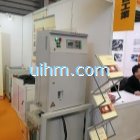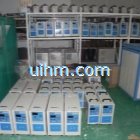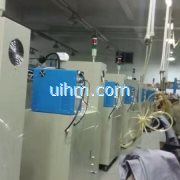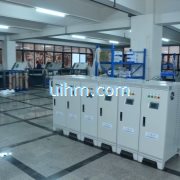-
Keywords"induction shrink fitting",total
38 records
-
induction shrink fitting for automotive cylinder rod
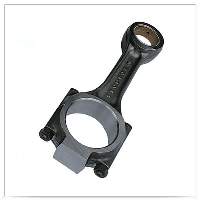
Most applications involve a shaft with a given outside diameter and another part such as a bearing, gear, steering knuckle or washer which has a bore hole. There are several forms of this type of joint, characterized by the amount of tolerance (space) betw…
-
induction shrink fitting for gears
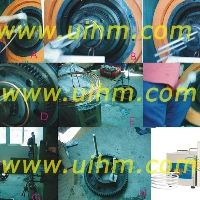
Induction Shrink Fitting for gears
-
induction shrink fitting carbide ring
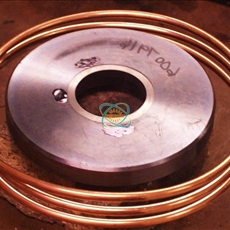
Shrink fitting carbide ring Objective Shrink fitting a carbide ring into a steel valve seatMaterial Steel valve seat 6” (152.4mm) OD with 3” (76.2mm) ID hole & .75” (19mm) thick, carbide ringTemperature 500 F ( 260 C)Frequency 55 kHzEquipment • Pow…
-
induction shrink fitting impeller blades to shaft
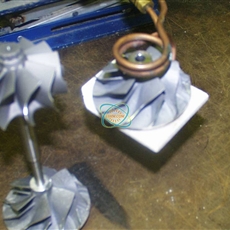
Shrink fitting impeller blades to shaft Objective Heat aluminum impeller blades to 200 F (93 C) and shrink fit onto a shaft.Material Aluminum impeller blades with a .28” (7.109mm) bore, aluminum shaftTemperature 200 F (93 C)Frequency 255 kHzEquipment • P…
-
induction shrink fitting pulley to insert bearing
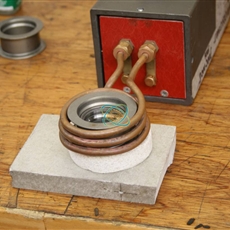
Shrink fitting pulley to insert bearing Objective Heat aluminum pulley for insertion of an inner bearing for the automotive industryMaterial Aluminum pulley 2.3” (60mm) OD x 1.6” (40mm) ID x 1” (27mm) high and inner bearing 0.7” (17.8mm) high x 1.6” (…
-
induction shrink fitting wrist pin into connecting rod
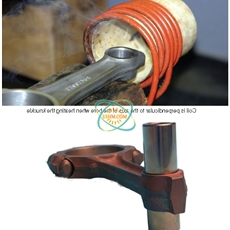
Shrink fitting wrist pin into connecting rod Objective Assemble connecting rods with a more accurate control of the heatMaterial Rod has an OD of .9125” (23.18mm), knuckle has an ID of .9125” (23.18mm) with an interference of .0001” (.0025mm). Knuckle a…
-
induction shrink fitting cam shaft gears
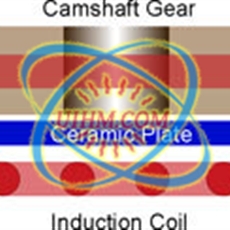
Shrink Fitting Cam Shaft Gears Objective To heat aluminum and steel camshaft gears to over 500F within 4 minutes for a shrink fitting application.Material 6” diameter, 2” thick steel and aluminum camshaft gears, “K” type thermocouple, digital thermomet…
-
induction shrink fitting
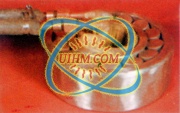
Induction shrink fitting refers to the use of induction heater technology to pre-heat metal components between 150 C (302 F) and 300 C (572 F) thereby causing them to expand and allow for the insertion or removal of another component.Typically the lower te…

